Cool stucco fire pit and seat in
Arlington, Virginia
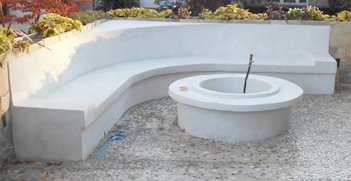
The fire pit is heated with a gas log and is filled with gravel
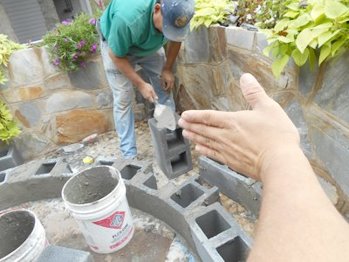
Curved seat starts out as blocks.

The seat itself is made using inch and a
half channel iron and metal lath. Here a piece of
corner rite, a strip of lath bent at an angle, is
used to reinforce the seat and the backrest.
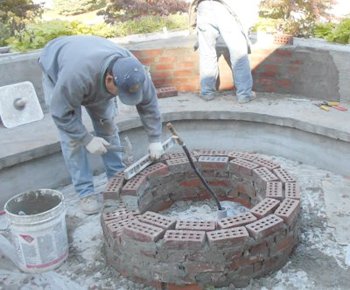
Bricks are used for the fire pit to
allow a tighter radius.
No, we aren't bricklayers. We only lay bricks
when they get stuccoed over and don't matter
much what they look like.
Stucco addition on a Spanish style house
in Chevy Chase.
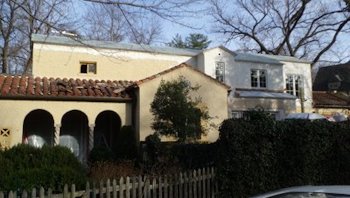
This Spanish style house has a Spanish
tile roof and a Spanish texture. You can't get much
more Spanish than this without going to Spain.
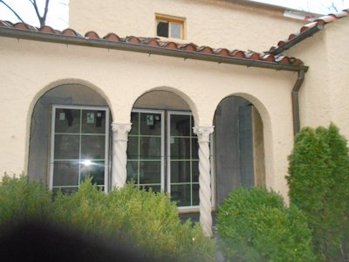
Stucco arches and
decorative cast columns accent the Spanish
style.
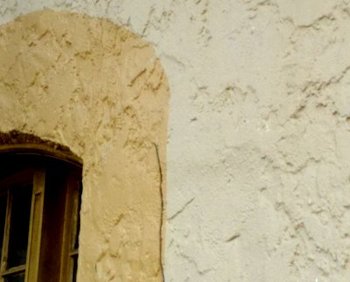
Original Spanish texture. Window surrounds are painted on.
Historic aggregated stucco
in Afton, Virginia
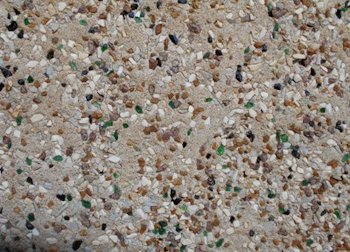
A view of the old house shows different
colored rocks and crushed green glass embedded in
the stucco. The old glass was made from wine
bottles broken up and screened to size.
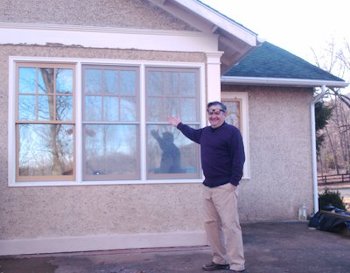
Another satisfied customer poses with pride.
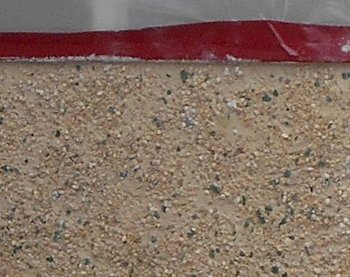
I matched the rock color fairly close and
screened the rocks to size. I used stained glass
instead of wine bottles. I got a reflective green glass
from Jed at Washington Art Glass.
Retaining walls done by the competition re-done
in Washington, DC
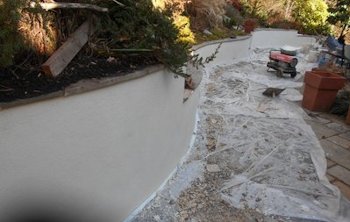
Serpent like retaining walls are
re-stuccoed.
You can see my heater in the background.
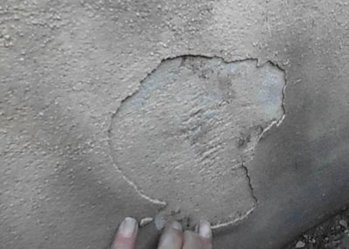
Eight year old synthetic stucco finish is
badly deteriorated. The whole house can be peeled off with
your fingernail. This material, when applied over a cement
basecoatlasts less than 8 years.
Garage and
retaining walls stuccoed to match
in Washington, DC
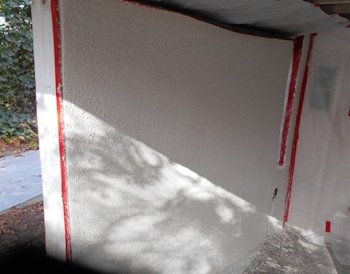
A close up of the dash on texture
on this
Wardman house. Wardman built a lot of
houses and over 20 apartment buildings in Washington in
the 1920's and 30's.
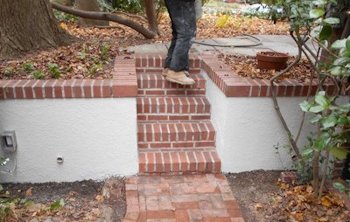
Dash on stucco texture on this concrete retaining wall.
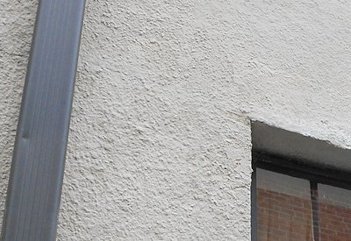
A close up of the dash on texture
on this Wardman house in Washington DC
Basement on this old house
livened up with white pebble dash stucco in Chevy Chase
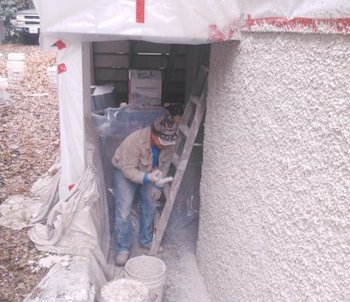
White pebble dash stucco in Chevy
Chase
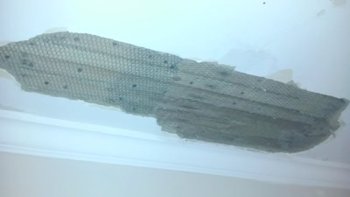
We're patching a lot of plaster these days seeing how it is cold outside.